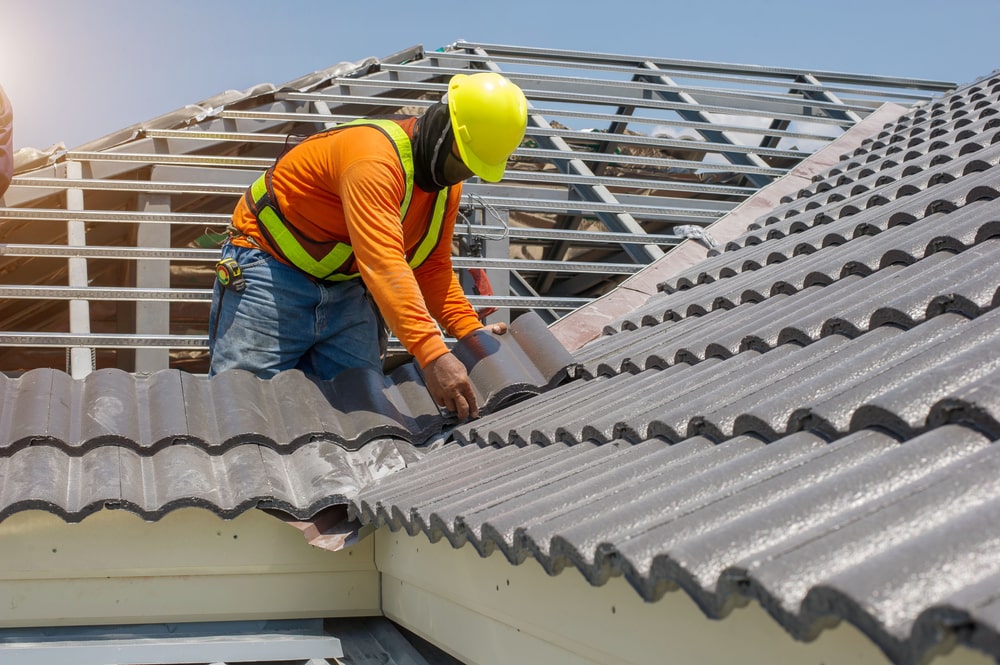A Comprehensive Consider Roofing Companies Gainesville Citizens Recommend
A Comprehensive Consider Roofing Companies Gainesville Citizens Recommend
Blog Article
Ideal Practices for Ensuring Appropriate Roof Covering Air Flow
A balanced intake and exhaust air vent ratio, typically 1:300, plays a pivotal function, with consumption vents ideally placed at the lower side of the roof covering for trendy air entrance and exhaust vents at the peak for warm air exit. Keeping insulation away from vents is vital to stop air flow limitation.
Understand Air Flow Fundamentals
Correctly understanding air flow fundamentals is essential for ensuring the longevity and effectiveness of roofing systems. Effective air flow reduces dampness build-up and temperature level extremes in the attic room, both of which can bring about considerable structural damages over time. A well-ventilated roof helps in preventing typical issues such as mold growth, timber rot, and ice dams, which can jeopardize the integrity of the roofing products and the underlying structures.
The key objective of air flow is to facilitate the activity of air, permitting a consistent exchange between the outside and interior settings. This balance is attained through a mix of consumption and exhaust vents that collaborate to keep optimum airflow. Consumption vents, commonly situated along the soffits or eaves, enable fresh air to get in the attic space, while exhaust vents, frequently situated at or near the roof ridge, make it possible for warm, moist air to run away.
Secret variables influencing the effectiveness of roof covering ventilation consist of correct positioning, appropriate sizing, and ensuring that both intake and exhaust vents are unblocked. Routine assessment and upkeep are vital to determine potential blockages, damage, or inadequacies in the air flow system, thereby safeguarding the roofing's efficiency and sturdiness.
Sorts Of Roofing System Vents
Roof covering vents play an important role in preserving efficient attic ventilation and, by extension, the total health of the roof covering system. Various kinds of roofing vents are offered, each with unique benefits customized to details roof requirements.

Soffit vents are mounted under the eaves and job in tandem with roofing vents to make sure a balanced consumption and exhaust system. By enabling cooler air to enter from below, soffit vents promote the expulsion of hot air through upper vents. Gable vents, located on the outside walls of the attic, deal another effective option, particularly in homes with gable roofing systems.
Evaluate Your Existing Ventilation

Next, take into consideration the age and condition of your roof products and air flow components. Older systems may not abide by existing building regulations or may have degraded in time, reducing their efficiency. Conduct visit our website an extensive evaluation to recognize any kind of indications of wear and tear, such as rust, damages, or gaps that can endanger the system's efficiency.
In addition, determine the attic room temperature level and humidity degrees. High temperatures and humidity can indicate poor ventilation.
Setup Best Practices
Efficient setup of roofing ventilation systems is extremely important for guaranteeing ideal performance and longevity. Appropriate installation begins with understanding the specific ventilation requirements of the building and the roofing it covers. This entails computing the appropriate proportion of consumption to tire vents, usually adhering to the 1:300 rule, which stipulates one square foot of ventilation for every single 300 square feet of attic room floor room.

The placement of vents is just as vital. Consumption vents must be installed at the roofing system's reduced edge, typically in the soffits, to permit trendy air to get in. Exhaust vents, on the various other hand, should be installed near or at the roof covering's peak to assist in the leave of cozy, moist air. This creates an all-natural air flow that helps preserve temperature and moisture equilibrium within the attic space.
Seal all vent links diligently to stop air leaks and possible water infiltration. Usage premium materials and adhere to supplier guidelines to make certain toughness and performance. Furthermore, integrating ridge vents with baffles can significantly enhance airflow efficiency by stopping wind-driven rain and snow from getting in the attic.
Inevitably, accurate setup of roof covering ventilation systems reduces possible concerns such as mold growth, ice dams, and structural damage, making sure the roof covering's honesty and the building's overall wellness.
Regular Upkeep Tips
Uniformity in maintenance techniques is essential to making sure the lasting performance of roof covering ventilation systems. During these examinations, make certain that vents are complimentary of debris, nests, and various other obstructions that can restrain air flow.
Use a soft brush or a vacuum to eliminate dirt and debris from consumption and exhaust vents. Be mindful not to harm the air vent screens or louvers during the process.
Proper insulation is similarly vital. Guarantee that attic room insulation does not obstruct the vents, as this can seriously limit air flow. Rearrange or change it to keep an efficient barrier. if any sites kind of insulation has actually changed or worked out.
Lastly, change any harmed or missing parts immediately. Damaged vents, fractured roof shingles, or deteriorated blinking can all add to poor air flow and needs to be attended to without hold-up. Normal maintenance makes certain that the roof covering ventilation system functions ideally, therefore extending the life-span of the roofing system itself.
Conclusion
Making sure proper roof covering air flow is extremely important for maintaining the effectiveness and durability of a roof system. Adherence to the 1:300 consumption and exhaust air vent ratio, coupled with the critical placement of vents, is important.
A well balanced intake and exhaust vent proportion, commonly 1:300, plays a pivotal function, with intake vents preferably placed at the reduced edge of the roofing for amazing air access and exhaust vents at the height for cozy air exit. Consumption vents, usually located along the soffits or eaves, enable fresh air to go into the attic room space, while exhaust vents, frequently positioned at or near the roofing ridge, make it possible for warm, damp air to run away.
Soffit vents are set up under the eaves and work in tandem with roof covering vents to make sure a well balanced intake and exhaust system. By permitting cooler air click to read to go into from below, soffit vents assist in the expulsion of warm air via upper vents. Adherence to the 1:300 consumption and exhaust vent ratio, coupled with the strategic placement of vents, is vital.
Report this page